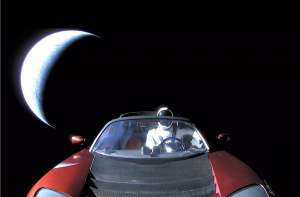By RYAN GRILLE
Yesterday saw one of the greatest scientific achievements of the decade: the first direct photograph of a black hole. Specifically, the photograph showed the supermassive black hole located in the center of Messier 87, a galaxy 53 million light years away from Earth. Previously, any representation of black holes were artists renderings. This photograph, taken by a network of connected telescopes entitled the Event Horizon Telescope, represents a major breakthrough in the history of astronomy.
However, not everyone was impressed by this new photograph. One journalist in particular, Heather Schwedel of Slate, wrote an article entitled “We Need to Admit That the Black Hole Photo Isn’t Very Good.”
In the face of an extremely important moment for cosmological studies, Schwedel complained that the photograph is “too blurry” and “just not that aesthetically pleasing,” Apparently, she is unaware of the amount of painstaking work that went into trying to capture the photograph in the first place. An excellent video by Vox explains all the variables that went into this groundbreaking project. It shouldn’t come as a purpose that the result isn’t perfect since it is the first of its kind.
These kinds of snarky and cynical articles anger me because they undermine genuine human achievement. Its possible this article was intended to be deliberately infuriating as a way to increase clicks. Clickbait journalism is not just annoying for not providing genuine news, but for undermining it. The black hole photograph should be considered an accomplishment. Maybe more reporters like her should be able to show more respect.


